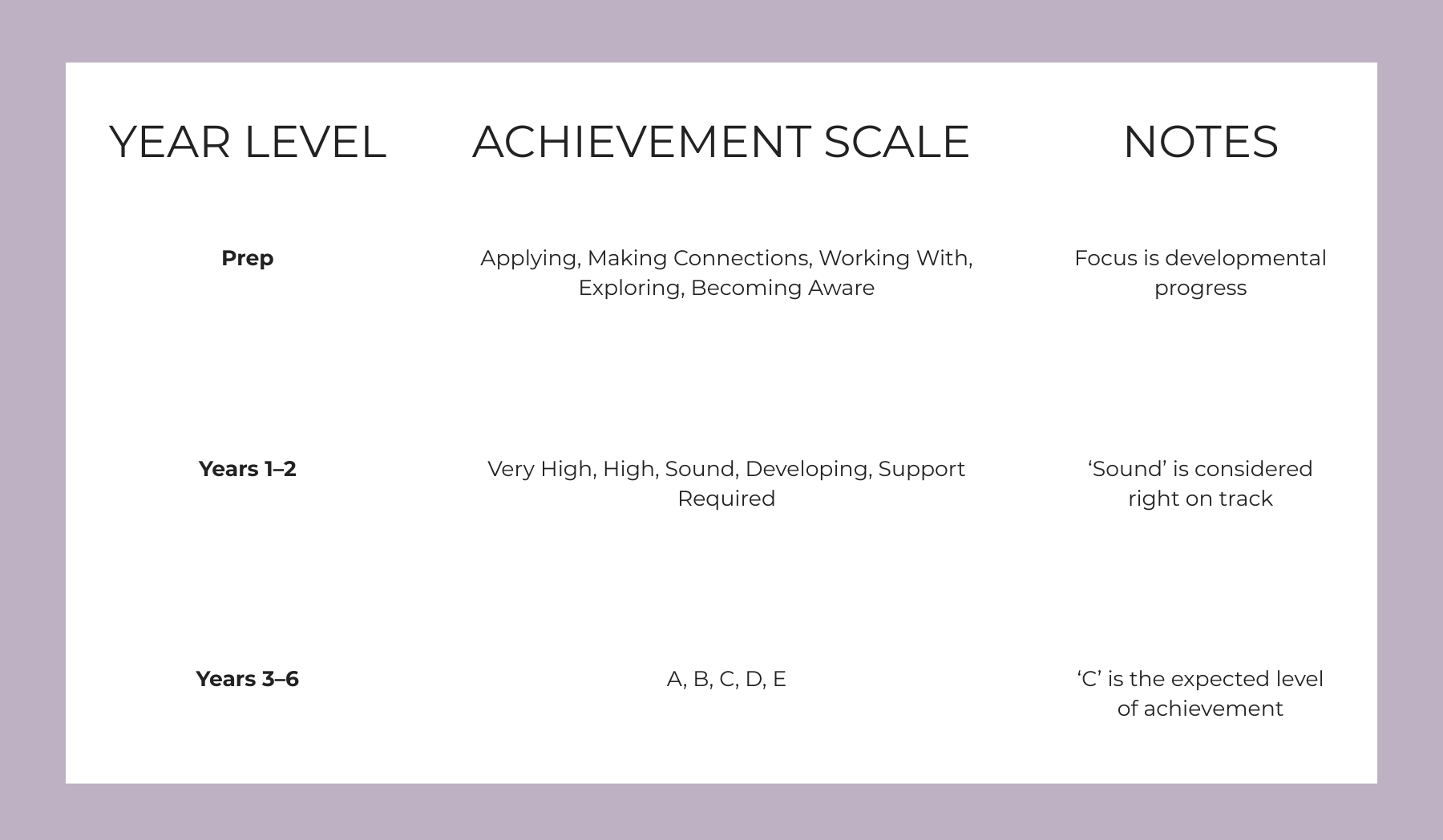What Your Child’s Report Card Really Means (And How to Use It To Support Their Growth)
It’s that time of year again 👀
School holidays have arrived, and for many families, that also means the school report card has just come through.
Depending on your school, it might have landed in your email inbox, appeared in the app or (if you’re lucky) been handed over in person and left crumpled in the bottom of a school bag.
Pride.
Worry.
Surprise.
Even confusion.
All of those feelings are completely normal.
A report card is just one piece of the puzzle. Whether it left you celebrating or wondering what’s next, this is a great moment to pause, acknowledge what’s gone well and plan your child’s next steps with confidence. 🚀
First: What Is the Report Card Actually Telling You?
A school report card gives you a summary of how your child is progressing against the expected achievement level for their year group.
The language schools use varies depending on your child’s year level, which can make things feel less straightforward, especially if you have more than one child.
Here’s a quick guide to the reporting scales for Prep to Year 6 in Queensland:
You’ll also see grades for effort and behaviour, which use a five-point scale like Excellent, Very Good, Satisfactory, Needs Attention and Unacceptable. These give insight into how your child is engaging with learning. In many cases, they reveal even more than the academic grade.
Just a note here: Some schools use the A–E scale for effort and behaviour as well, so there may be slight variations in how it’s reported. If anything is unclear, it’s always okay to ask your child’s teacher to walk you through it.
A Quick Note About the ‘C’ Grade
If your child has received a ‘C’, you might be feeling a bit confused. Especially if, when you were in school, a ‘C’ meant “just scraping by.” But in today’s system, that’s no longer the case.
A ‘C’ means your child is meeting the expectations for their year level. It reflects solid, steady progress based on national curriculum standards.
In other words, your child is right where they need to be. It’s not a red flag. It’s a reliable sign that they’re on track.
How to Support Your Child Based on Their Results
No matter what the grades say, your child’s report card can help guide your next steps at home. Here’s how to interpret each achievement level and offer the right kind of support:
A, Very High, Applying
Your child is demonstrating deep and broad knowledge, understanding and skills.
Celebrate their achievement. This result reflects genuine mastery.
Offer extension opportunities like competitions, coding, project-based learning or extra reading.
Encourage them to set new learning goals.
B, High, Making Connections
Your child is showing deep knowledge and understanding, just short of mastery.
Praise their consistent effort and growth.
Reflect together on what helped them succeed this term.
Support their curiosity with enrichment activities.
C, Sound, Working With
They’re demonstrating the expected knowledge and skills for their year level.
This is right where they should be. Steady, age-appropriate progress is worth celebrating.
Ask what they enjoyed and what felt tricky.
Help them apply successful habits to any areas that feel harder.
D, Developing, Exploring
Your child has shown partial understanding of what’s expected.
Pause and get clear on what didn’t click.
Ask the teacher for specifics. What learning goals were missed?
Support can look like extra review at home, scaffolding skills or a tutor to help close gaps.
E, Support Required, Becoming Aware
Your child is beginning to demonstrate the expected knowledge and skills.
This may reflect learning challenges, gaps or disruptions.
Start with compassion. This is a signal, not a reflection of their worth or potential.
Work with your child’s teacher to plan practical next steps and find the right support. You might also find our Action Plan for Parents: What to do When Your Child Falls Behind helpful as you start exploring your options.
Not Sure What Comes Next? You're Not Alone.
Sometimes report cards raise more questions than answers. You might be wondering whether to step in, wait and see, or how much support your child really needs.
That’s completely normal.
At Attain Education, we speak with parents every day who care deeply and just want to do what’s best for their kids. You don’t need to have all the answers, you just need the right support behind you.
Our tutors are qualified primary school teachers who specialise in one-on-one support. Whether your child needs to fill a few gaps, rebuild confidence or be gently challenged, we’re here to help them thrive and to make things easier at home, too.
Your Child’s Grades Are a Starting Point. Not The Final Word.
A report card isn’t the whole story. It’s a snapshot. One part of a much bigger journey.
As you move through these holidays, take a moment to acknowledge how far your child has come.
Celebrate the effort, the resilience and the small wins. And if you see an opportunity to offer extra support, don’t hesitate.
🌱 Need help figuring out the next step?
Book your free consultation call today, and let’s talk about how we can support your child to grow, thrive and believe in themselves.
Every child has potential. Sometimes they just need the right support to unlock it.



